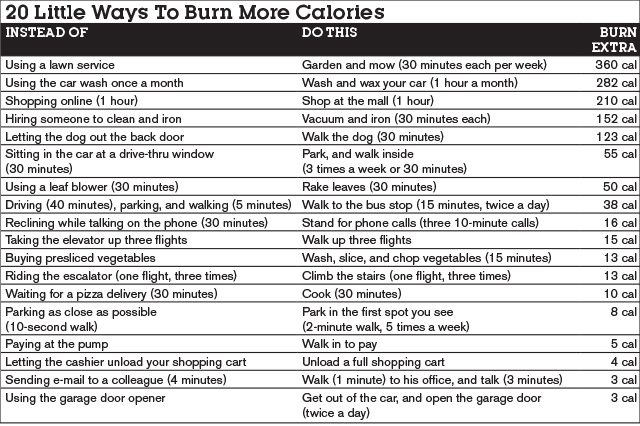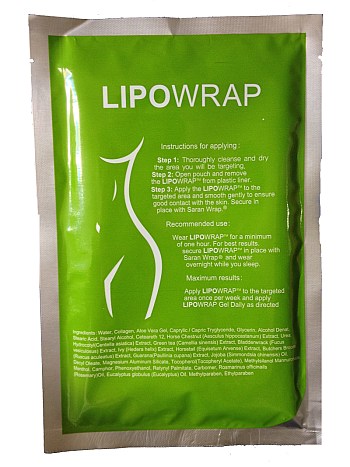How to Reduce Your Overall Body Fat
Reducing your overall body fat may help improve your health. While some body fat is essential to the healthy functioning of your body, large amounts of excess body fat can lead to serious health problems. Too much fat in the body is connected to many health conditions such as sleep apnea, high blood pressure or heart disease and hardening of the arteries.[1] Making changes to your diet, lifestyle and exercise routine can help you safely lower your overall body fat and reduce your risk for certain health conditions.
Steps
Method 1 Reducing Body Fat with Dietary Changes
-
1
Opt for meals that are low calorie. Low calorie diets will help you lose weight and reduce body fat.[2] Monitor how many calories you eat daily and reduce this number by around 500 calories each day. This will yield a 1-2 pound weight loss per week.[3]
- Count how many calories you're currently consuming. You can use a food journal, app or online calculator to help you do this accurately. Cut out about 500 calories from this number. Your end result should be what you aim for daily for slow and safe body fat loss.
- Do not try to follow a very low calorie diet or consume less than 1200 calories daily. When you're calories are too low, you may stop losing weight or lose lean muscle mass, not body fat.[4]
- You should check with your doctor about the amount of calories you should be consuming in order to reduce body fat.
-
2
Focus on lean protein. Protein is essential for your body's metabolism. Focusing on lean protein at all meals and snacks can help support weight loss and body fat reduction.[5]
- Lean protein should be included at all meals. This will help ensure you meet your daily recommended amount. For women, aim for 46 g daily and men should aim for 56 g of protein daily.[6]
- Lean protein sources include: poultry, lean beef, pork, legumes, tofu, low-fat dairy and seafood.
- Avoid sources of protein that contain higher amounts of saturated fat. Some studies have shown that a diet rich in saturated fats may increase body fat - especially in your abdomen.[7] Limit foods like: full fat dairy, fatty cuts of meat or butter.
-
3
Make fruits and vegetables a priority in meals. In addition to protein, make a large part of your meals and snacks a fruit or vegetable. These foods are very nutritious and contain a lot of healthy nutrients your body needs.
- It's generally recommended to consume about 5-9 servings of fruits and vegetables each day. Aim for 1-2 servings of fruit and the rest should be vegetables.[8]
- Also, when you're choosing foods from these groups, try to choose items that are brightly colored or darkly colored. These foods are typically more nutrient dense meaning they contain higher amounts of vitamins, minerals and antioxidants.[9] For example, choose kale over iceberg lettuce.
-
4
Reduce the amount of grains you eat. One of the best ways to reduce your body fat is to reduce the amount of grains you eat each day.[10] These carbohydrate rich foods, although considered part of a well-balanced diet, can slow the reduction of body fat.
- Foods that are high in carbohydrates include: bread, rice, pastries, sweets, pasta, crackers, chips, English muffins, or bagels.
- There are other foods that contain carbohydrates like fruits and legumes. However, these foods also contain a high amount of other essential nutrients and shouldn't necessarily be limited.
-
5
Make water your number 1 drink of choice. On a normal day you should drink about 8, 8-oz glasses of water. Choose no calorie, decaf beverages for the most hydrating fluids.[11]
- If you are specifically trying to lose body fat, you can increase that amount. Water not only hydrates the body, it increases your energy and keeps you feeling full.
- Avoid sweetened, calorie filled beverages like sodas, juice or energy drinks as they will add calories to your diet and may increase body fat.
- This is a general recommendation. The amounts of fluids needed will differ for everyone. For example, those participating in large quantities of aerobic exercise will need to drink more to help them re-hydrate.
Method 2 Reducing Body Fat with Exercise
-
1
Increase your aerobic activity level. Put together an aerobic exercise routine that will work in conjunction with your diet to cut body fat. Together, aerobic exercise and diet have been shown to be one of the best combinations to reduce body fat.
- In general, it's recommended to include at least 150 minutes of aerobic activity each week.[12] To speed the reduction of body fat, it's suggested to work out for longer - up to 60 minutes daily.[13]
- Include a wide variety of aerobic exercises like: walking/jogging, running, biking, dancing, swimming, martial arts or boxing and using the elliptical.
- If you're just starting out with exercise, start by building upon your current activity regimen.
- Whether you opt for low impact exercises such as swimming or walking, or a more intense routine like kickboxing or weight training, aim to work out for at least 30 minutes.
-
2
Add in vigorous intensity interval exercises. Some studies have shown that more vigorous intensity exercises that are done in intervals, decrease body fat more efficiently than moderate intensity exercise.[14]
- Interval training combines both very high and moderate intensity exercise. These workouts are usually done for shorter periods of time. An example of interval training is: 1 minute of sprinting followed by 3 minutes of jogging. This cycle would be repeated several times.
- Interval training is great for body fat reduction as it has been shown to burn more calories from fat and keeps your metabolism elevated even 24 hours after you've completed the workout.[15]
-
3
Include regular resistance training. Strength training does not burn high levels of fat when you're performing the exercises. However over time, strength training can help you build lean muscle mass which can help you increase your metabolism and your body's ability to burn calories.[16]
- It's recommended to include strength training 2-3 days a week for at least 30 minutes.[17] It's important to work all large muscle groups throughout the week.
- Always include 1-2 days of rest and recovery between strength training routines. Your body and muscles need time for adequate recovery otherwise performance may suffer over time.[18]
-
4
Increase your lifestyle activity. In addition to cardio and strength training, you can increase your daily lifestyle activity. Studies have shown that people who are more active in general have lower weights and body fat levels.[19]
- Think about how much you move or how many steps you take in a day. How can you increase that?
- A few ways to increase movement in your day include: do leg lifts while you sit at your desk or stand or do knee raises during commercial breaks.
- Add more steps to your day by: taking a walk break during lunch, taking the stairs instead of the elevator, park farther away from your destination, and walk to places that are close to you (like the grocery store or pharmacy).
Method 3 Making Other Lifestyle Changes to Reduce Body Fat
-
1
Manage stress levels. Studies have shown that long-term, low grade, chronic stress increases cortisol levels in the body. When this occurs, not only can it be difficult to lose weight, you may even gain more body fat.[20]
- Exercising regularly can help manage stress levels. In addition, if you're feeling overwhelmed or overly stressed, take a 10 minute walk to help yourself calm down and unwind.
- Engage in other activities that will also help you relax. You can listen to music, read a good book or magazine or watch a movie.
- If you're having trouble managing stress levels, consider talking to a therapist or behavior specialist. These health professionals will be able to coach and guide you to better stress management.
-
2
Go to bed earlier. Many people do not get adequate rest each night. Sleep is important for a variety of bodily functions including weight management. Go bed to earlier to get more sleep to help reduce your body fat levels.[21]
- It's recommended to get at least 7 hours of sleep each night. You may need to go to bed earlier and wake up a little later (if possible) to help you increase the amount you sleep each night.
- Adequate rest also helps improve athletic performance in addition to helping you manage your hunger signals throughout the day.
-
3
Ensure that you are eating healthy portions. Portion control is necessary if you want to reduce body fat. Portion controlling will help you reduce your overall calorie intake and body fat.
- In general, average healthy adults adults should consume no more than 3-4 oz of protein, 1/2 cup of grains, 1/2 cup of fruit and 1 cup of vegetables per serving.[22]
- Use measuring cups or a food scale to help keep you on track with your portions.
- You can also use smaller plates, bowls and cups to physically limit how much food you can serve yourself at one sitting.
- Consuming more than the recommended portions of foods may increase your risk for gaining weight and increasing total body fat.
Method 4 Measuring Your Progress
-
1
Start a journal or log. Whenever you're trying to lose weight or reduce your body fat, it's a good idea to start a journal. You can include a variety of information, but this log will help you see and measure your success.
- Start a journal prior to making any changes. You might make notes about what you plan to change, your timeline and any other ideas or thoughts you have.
- Think about keeping track of your foods and beverages. Logging what you eat has been shown to help people stay on track. It will also allow you to see any slip ups or help you determine if what you're eating is affecting your success.[23]
- Also keep track of any measurements you take like your weight.
-
2
Get on the scale weekly. When you're trying to lose weight and reduce your overall body fat, it's important to monitor your progress. One way to check in is by weighing yourself weekly.
- Studies have shown that weekly weigh-ins help people stay on track and on target. You're more likely to be successful long-term if you continue to self monitor and check-in with your weight.[24]
- Ideally, weigh yourself about 1-2 times a week. It might be harder to see accurate progress if you're weighing yourself daily due to normal fluctuations in body weight.
- For the most accurate measure of your progress, weigh yourself on the same day of the week, at the same time and in the same clothes.
-
3
Take your measurements. As you continue to lose weight and reduce your overall body fat, you'll notice that it's not only the scale that's changing. If you're losing body fat, you should also notice the the size and shape of your body also changes.
- Prior to starting your diet and exercise program, take a variety of measurements. These will help you see where you're losing the most fat.
- Typical places to measure and track are: waist, hips, bust, thighs and upper arms. Keep these measurements in a journal. Every month, re-measure yourself to help you track your progress.
-
4
Get a body fat percentage test. If you're able, get your body fat percentage tested and evaluated. This is the percentage of your body that is made up from fat. As you continue to diet and exercise, this percentage should decrease over time.[25]
- Many gyms offer body fat percentage as a free service to their members. Ask a staff member or trainer at your local gym for more information.
- You may also ask your doctor or physician if they have the equipment in office to evaluate your body fat percentage.
- There are devices you can purchase for home use, but these typically take a lot of experience and practice using. Your margin of error will most likely be much larger compared to a health or fitness professional doing the tests for you.
-
How By Using This Oil You Can Lose 10 Pounds and Speed Up Your Metabolism ONLY In 2 Weeks
How By Using This Oil You Can Lose 10 Pounds and Speed Up Your
-
Serving Sizes Around the World
More than 1/3 of Americans are obese, and obesity is the leadi
-
10 Ways To Lose Weight Fast And Quick
Here are some easy and quick weight loss tips 1.Exercise - Exercisin
-
How to Lose 15 Pounds in 2 Weeks
The best way to lose weight and keep it off is by adopting a healthy
-
Easy Ways To Lose Weight
When you such chronic obesity problems as we have in our society, it
-
Put An End To Yo-Yo Dieting With These Tips
TIP! Eating chunky soups can help you achieve weight loss. It
- DON'T MISS
- Why Wait? Start Losing Weight With These Ideas Today!
- Should You Try Carb Cycling For Weight Loss?
- Is Biggest Loser Wrong?
- Honest Ideas About Weight Loss
- Great Ideas To Help You Lose Weight And Enjoy Life
- Keeping A Safe Weight Loss Regimen
- How to Follow the General Motors Diet
- Solid Advice On How To Lose Weight
- 5 Quick Weight Loss Tips
- The Very Best Diet Tips To Jump-start Weight Loss!




